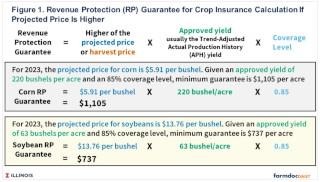By Lisa Schnirring
At a stakeholder meeting with the poultry sector last week to discuss the status of the battle against avian influenza, federal officials said improved biosecurity has reduced the number of outbreaks at commercial farms compared with a year ago.

Also, the US Department of Agriculture (USDA) said its Agricultural Research Service (ARS) this month started testing several vaccine candidates for possible use in poultry.
Improved biosecurity, quick outbreak response
The highly pathogenic H5N1 2.3.4.4b clade—currently fueling outbreaks in wild birds, poultry, and even mammals in multiple parts of the world—was detected in US wild birds in January 2022, with the first outbreaks in poultry reported a month later. A small number of human infections have been reported, with some of the infections severe or fatal.
The virus is still circulating in wild birds and the USDA expects activity to peak in spring and summer. In recent updates, the USDA Animal and Plant Health Inspection Service (APHIS) reported more outbreaks in six states, mostly involving backyard birds. They include California, Colorado, Kansas, Montana, Nebraska, and New York.
In its statement on the stakeholder meeting, the USDA said improved biosecurity at commercial farms has vastly reduced the number of outbreaks. In March 2022, there were 51 avian flu outbreaks at commercial farms, and poultry losses by the end of the year soared past the previous record high of 50.5 million birds. However, last month there were only 7 outbreaks, a decline of 85% from a year ago.
Jenny Moffitt, the USDA's regulatory programs under secretary, said the industry has learned lessons from the outbreaks of 2014 and 2015. She said 70% of the outbreaks during the earlier outbreaks were from lateral spread (between farms). But in the current outbreaks, only 15% were due to lateral spread.
The USDA also said its efforts, such as enhanced surveillance and testing and quick response to outbreaks, have cut the response costs by nearly 50%.
Vaccine results expected in next few months
USDA officials also detailed the work of their science groups on a poultry vaccine against the disease. It said initial data on a single dose of the vaccine are expected in May, with results from two-dose challenge studies expected in June.
If the trials are successful and the USDA decides to continue development, the next step would be identifying manufacturers that may be interested. The USDA said there are about 20 stages before a vaccine is delivered, which would typically take 2 to 3 years for a vaccine to be licensed. However, an emergency situation could allow vaccine makers to expedite the process.
"USDA estimates an 18-24 month timeline before having a vaccine that matches the currently circulating virus strain, is available in commercial quantities, and can be easily administered to commercial poultry," the agency said.
Some countries, such as China, allow poultry vaccination, while other nations prohibit the practice because of several issues, such as the risk that vaccinated birds without clinical signs could continue to spread the virus, a factor that also has poultry export implications. But given the burden of H5N1 outbreaks on several continents and spread to newly affected areas, including South America, several countries are reconsidering poultry vaccination or, like France, will start vaccination programs.
Source : umn.edu